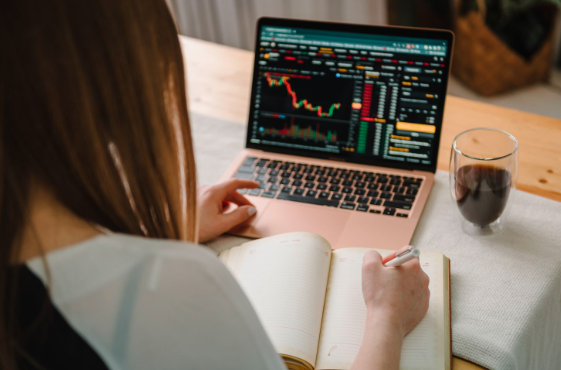Introduction
In today’s fast-paced digital world, online trading has become more accessible. FT Asia Trading has emerged as a notable platform in this arena, catering to novice and experienced traders. This article will explore FT Asia Trading in detail, covering its features, benefits, trading strategies, and more. We will also answer frequently asked questions and conclude with essential insights to enhance your trading journey.
What is FT Asia Trading?
FT Asia Trading is an online platform enabling users to engage with various financial markets, including forex, stocks, commodities, and indices. FT Asia Trading is designed to focus on user experience and offers essential tools and resources for traders at all levels. The platform is committed to transparency, customer support, and a secure trading environment.
Key Features of FT Asia Trading
FT Asia Trading boasts several key features that make it a preferred choice for many traders:
User-Friendly Interface
The platform is designed to be intuitive, allowing new users to navigate easily. From trading tools to market analysis, everything is easily accessible.
Diverse Trading Instruments
FT Asia Trading provides access to a wide range of trading instruments, enabling users to diversify their portfolios. These include:
- Forex: Trade major and minor currency pairs.
- Stocks: Invest in shares from companies around the world.
- Commodities: Engage in trading physical goods such as gold, oil, and agricultural products.
- Indices: Participate in trading major market indices globally.
Competitive Fees
One of the standout aspects of FT Asia Trading is its competitive fee structure. The platform charges lower commissions than many competitors, making it an appealing option for frequent traders.
Advanced Trading Tools
FT Asia Trading provides a suite of advanced trading tools, which include:
- Charting Tools: Analyze market trends with customizable charts.
- Technical Indicators: Use various indicators to inform your trading decisions.
- Risk Management Features: Employ stop-loss and take-profit orders to manage risk effectively.
Educational Resources
FT Asia Trading is dedicated to helping its users learn and grow. The platform offers a wealth of educational materials, including:
- Webinars
- Video tutorials
- Articles and guides covering various trading topics
These resources are instrumental for traders looking to build their knowledge base and improve their skills.
Robust Security Measures
Security is paramount in online trading. FT Asia Trading employs advanced encryption technologies to safeguard user data and transactions, giving traders confidence as they navigate the markets.
Benefits of Using FT Asia Trading
Accessibility for All Traders
FT Asia Trading caters to traders of all skill levels. Whether you are a beginner or an experienced professional, the platform is designed to meet your needs. New users can benefit from educational resources, while advanced traders can utilize sophisticated tools.
Real-Time Market Data
Having access to real-time market data is essential for successful trading. FT Asia Trading provides users with up-to-the-minute information on market conditions, allowing for quick and informed decision-making.
24/7 Customer Support
Customer support is crucial for any trading platform. FT Asia Trading offers 24/7 support through various channels, ensuring users can receive assistance whenever needed.
Flexibility and Convenience
FT Asia Trading allows users to trade on various devices, including desktops, tablets, and smartphones. This flexibility will enable traders to stay connected to the markets and execute trades on the go.
Diverse Trading Community
FT Asia Trading fosters a vibrant trading community. Users can connect, share experiences, and learn from each other. This sense of community is invaluable for traders looking to enhance their skills and strategies.
How to Get Started with FT Asia Trading
Step 1: Sign Up
You must first create an account to start trading on FT Asia Trading. The registration process is straightforward and requires you to provide personal information such as:
- Name
- Email address
- Phone number
- Country of residence
Once you complete the registration form, you will receive a confirmation email to activate your account.
Step 2: Verify Your Account
After signing up, the next step is to verify your account. This usually requires submitting identification documents, such as:
- A government-issued ID
- Proof of address (e.g., utility bill or bank statement)
Verification is essential for compliance with regulatory requirements and enhancing security.
Step 3: Deposit Funds
Once your account is verified, you can deposit funds. FT Asia Trading supports various payment methods, including:
- Bank transfers
- Credit/debit cards
- E-wallets
Please ensure you know the minimum deposit requirements, as they may vary based on your payment method.
Step 4: Explore the Platform
Before you start trading, take some time to familiarize yourself with the FT Asia Trading platform. Understanding how the platform works is crucial for effective trading.
Step 5: Choose Your Trading Instruments
Decide which financial instruments you want to trade. FT Asia Trading offers a variety of options, allowing you to customize your portfolio based on your trading strategy and risk tolerance.
Step 6: Start Trading
You can begin trading once you are comfortable with the platform and have chosen your instruments. Utilize the available tools and resources to make informed decisions. Monitor market trends, analyze data, and execute trades as needed.
Trading Strategies for Success
Having a solid trading strategy is essential for achieving success in financial markets. Here are some popular trading strategies you can consider using on FT Asia Trading:
Day Trading
Day trading involves buying and selling financial instruments within the same trading day. This strategy requires a keen understanding of market trends and quick decision-making. Critical points for day trading:
- Focus on liquid markets to ensure quick trade execution.
- Use technical analysis to identify entry and exit points.
- Manage risk with strict stop-loss orders.
Swing Trading
Swing trading involves holding positions for several days to exploit price swings. This strategy is ideal for traders who cannot monitor the markets continuously. Critical points for swing trading:
- Identify trends using technical indicators.
- Hold trades for several days to capitalize on market momentum.
- Use stop-loss orders to limit potential losses.
Position Trading
Position trading is a long-term strategy where traders hold positions for weeks, months, or even years. This approach requires a thorough analysis of market fundamentals. Critical points for position trading:
- Focus on long-term trends rather than short-term fluctuations.
- Use fundamental analysis to identify potential growth sectors.
- Be prepared to weather short-term volatility.
Scalping
Scalping involves making rapid trades to capture small price movements. This strategy requires quick execution and a high volume of trades. Critical points for scalping:
- Focus on highly liquid instruments.
- Use short-term charts for quick analysis.
- Set tight stop-loss orders to manage risk.
Trend Following
Trend following is a strategy that involves analyzing market trends and making trades in the direction of the trend. Critical points for trend following:
- Identify the direction of the trend using moving averages or trendlines.
- Enter trades in the same direction as the trend.
- Use trailing stops to protect profits as the trend continues.
Understanding Market Analysis
To become a successful trader on FT Asia Trading, you must understand market analysis. There are two primary types of analysis: technical analysis and fundamental analysis.
Technical Analysis
Technical analysis involves studying historical price data and market trends to forecast future price movements. Essential tools and concepts include:
- Charts: Visual representations of price movements over time.
- Indicators: Mathematical calculations used to identify trends and potential reversal points.
- Support and Resistance Levels: Price levels where the market tends to reverse or consolidate.
Fundamental Analysis
Fundamental analysis focuses on evaluating the intrinsic value of an asset based on economic, financial, and other qualitative and quantitative factors. Key components include:
- Economic Indicators: Data points such as GDP, unemployment rates, and inflation that impact market conditions.
- Company Financials: Financial statements and performance metrics for publicly traded companies.
- Market News: Current events and news that can influence market sentiment.
Combining Analysis Techniques
Many successful traders use a combination of technical and fundamental analysis to inform their trading decisions. By understanding both perspectives, you can better understand the markets and improve your trading outcomes.
Common Mistakes to Avoid
While trading can be rewarding, it’s essential to be aware of common mistakes that can lead to losses. Here are some pitfalls to avoid:
Lack of a Trading Plan
Trading without a clear plan can lead to impulsive decisions. Always have a well-defined trading plan that outlines your goals, strategies, and risk management techniques.
Overleveraging
Using excessive leverage can amplify losses. Be cautious with leverage and ensure you are comfortable with the potential risks.
Emotional Trading
Allowing emotions to dictate your trading decisions can be detrimental. Stick to your trading plan and avoid making impulsive trades based on fear or greed.
Ignoring Risk Management
Effective risk management is crucial for long-term success. Always use stop-loss orders and position sizing to manage your risk effectively.
Failure to Adapt
The markets are constantly changing. Stay informed about market trends and be willing to adapt your strategies as needed.
Conclusion
FT Asia Trading stands out as a comprehensive platform that caters to the diverse needs of traders in the Asian market. With its user-friendly interface, a wide array of trading instruments, competitive fees, and educational resources, FT Asia Trading empowers traders to navigate the complexities of the financial markets. By understanding key features, trading strategies, and common pitfalls, you can enhance your trading experience and work towards achieving your financial goals.
Start your trading journey today with FT Asia Trading and unlock the potential for success in the dynamic world of online trading.
Table: Key Features of FT Asia Trading
| Feature | Description |
| User-Friendly Interface | Intuitive design for easy navigation |
| Diverse Trading Instruments | Access to forex, stocks, commodities, and indices |
| Competitive Fees | Lower commissions compared to many competitors |
| Advanced Trading Tools | Comprehensive tools for analysis and risk management |
| Educational Resources | Webinars, tutorials, and articles for skill enhancement |
| Robust Security Measures | Advanced encryption for user data protection |
Frequently Asked Questions
Is FT Asia Trading suitable for beginners?
Yes, FT Asia Trading is designed for traders of all skill levels. The platform offers educational resources to help beginners learn the ropes.
What are the fees associated with FT Asia Trading?
FT Asia Trading has a competitive fee structure, with lower commissions than many competitors. It’s essential to review their fee schedule for specific charges.
How can I deposit funds into my account?
You can deposit funds using various methods, including bank transfers, credit/debit cards, and e-wallets. Check the platform for specific options and minimum deposit requirements.
Can I trade on my mobile device?
Yes, FT Asia Trading is accessible on multiple devices, including desktops, tablets, and smartphones, allowing you to trade on the go.
What trading strategies work best on FT Asia Trading?
Successful strategies include day trading, swing trading, position trading, scalping, and trend following. Your choice of strategy should align with your trading style and risk tolerance.
How does FT Asia Trading ensure security?
FT Asia Trading employs advanced encryption technologies to protect user data and transactions, ensuring a secure trading environment.



